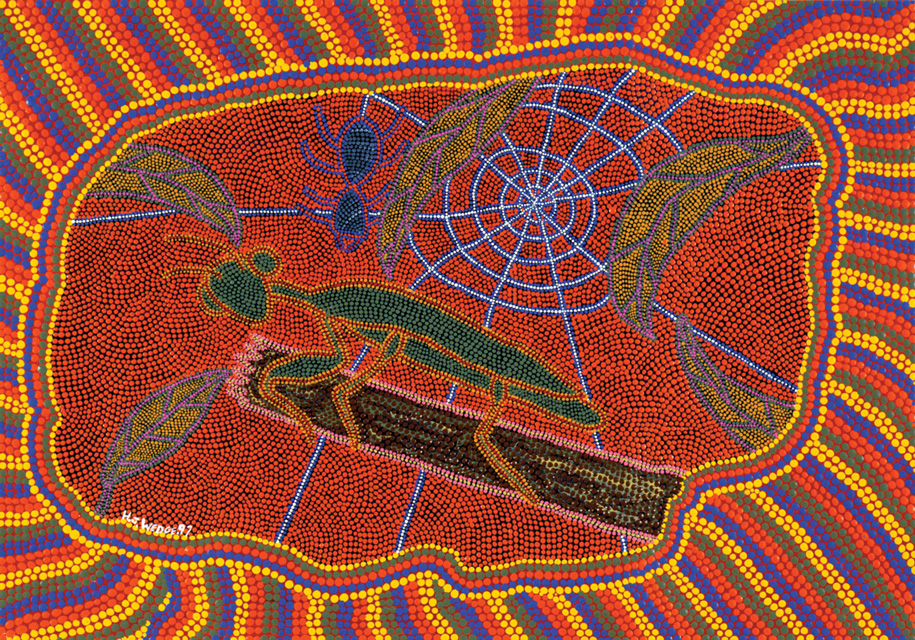


HJ Wedge's art is an electrifying addition to the group of rural-based Indigenous artists from the towns of eastern Australia—Robert Campbell Jnr and Ian W Abdulla are the best-known—who have married a strong desire to narrate stories from both personal and national history with 'naïve' visual styles of their own inventing.
A Wiradjuri man from Cowra in New South Wales, Wedge was raised on the Erambie Mission in a situation of deprivation that he vividly recounts in his text 'My life in my words'.1 After teenage years spent in and out of boys homes, frustrated in his interest in art, Wedge started to paint in earnest in 1989 at the Eora Centre in Redfern, Sydney. Wedge quickly became one of the most distinctive painters associated with Boomali, the seminal Aboriginal artists' cooperative in nearby Chippendale.
Wedge's arresting style communicates with great immediacy. His smallish paintings, some done on the canvas boards associated with low-budget dot paintings for tourists, always tell a story. In expressionistic comic-strip panels that owe something to the talking heads of the television screen, Wedge's confronting works 'portray the genocide of Indigenous people; the onslaught of Christianity; the destruction of the environment; alcohol, drug abuse and domestic violence; demon and creator spirits; and his dreams of the traditional way of life'.2 Wedge paints in two styles, one a raw, undecorated manner reserved for confronting scenes, and the other with an overlay of delicate dots done 'when he is calm and in a pleasant mood'3—a manner dominant in the later 1990s when these four panels were selected.
In contrast to the frequent concealment of sacred stories in central Australian art, Wedge clarifies his subjects in recorded texts that he insists be exhibited alongside his pictures. In Aboriginal English, they vary in tone from the homily to the tirade as they recount Wedge's version of the history of injustices his people have suffered in this country. As Brenda L Croft writes, his texts 'are neither sanitized nor censored ... nor are they grammatically correct. ... They offer a real guide to HJ's perception of the world around him as he soaks up current affairs, political situations and historical representations'.4 They are quoted from here as each picture is discussed in turn: the first two works highlight Wedge's environmental concerns; the second two the social implications of colonisation.
In Run off into the ocean (1996), what appears to be a dream of leisure and modernity spells out the opposite message:
Ever since they invented chemicals for farming, irrigation, even the simple detergents when you wash your cars down, the leftover always seems to run down the drain and into the sewers, lakes and rivers and oceans. We are gradually killing the marine life with the stuff. ...I think in the near future as it shows in this art work the water is never going to be blue-green again. ... We don't care, we will still use the ocean for our sporting activities like boating and water skiing.
Wedge's text in Camouflage (1996) redefines this peaceful vignette of a praying mantis and spider in an environment of gum leaves as a meditation on how the device of camouflage in the animal kingdom is put to perverse uses by man. As opposed to the mantis 'on a branch blending in with the background', humans use camouflage in war, 'to destroy each other, to take land or gold or something that is richer than theirs ... Remember the animals and reptiles only use this to get away or for food or survival.'
In John the Baptist (1997) Wedge's mannequins, set in a panel of bright dots, act with their trademark strands of coloured hair, like electrified aureoles. The subject—immersion in the River Jordan—is revealed in Wedge's text as a parable about the imposition of Christianity in the Australian colony. At Sunday school as a child, Wedge learned about the original John the Baptist 'baptising men and women because it was their freedom of choice'. But in the latter-day Church, he says, 'babies have no choice at all because they are baptised when they are only a couple of week[s] old. I know that my mother didn't ask me ... whether I wanted to be Christian or not'.
In the dot painting Predator (1977), a great ancestral lizard Dreaming lies submerged in the landscape. Is the predator of the title (possibly drawn from the 1987 sci-fi film about a man-hunting alien that uses a high-tech camouflage suit to attain invisibility) the local reptile spirit, or the little European man waving to the viewer in the foreground? His motor-car, his square box of a house and the lifeless tree beside it seem to spell doom for the country beyond.
- Roger Benjamin
For further reading on the life and work of HJ Wedge, visit the National Gallery of Victoria website.